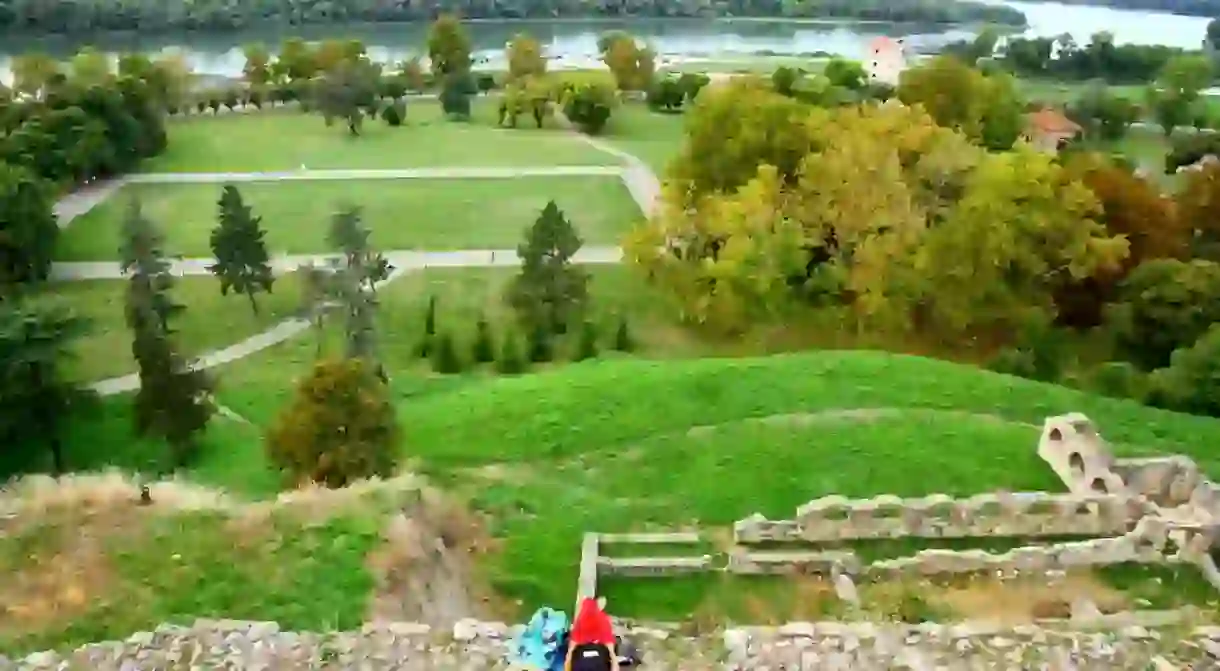The Most Beautiful Parks and Green Spaces in Belgrade, Serbia

For whatever reason, Belgrade has a reputation for being a ‘grey’ city. Sure, there are plenty of large apartment blocks throughout town, but the Serbian capital has more parks and green areas than people care to admit. Belgrade deserves to be known for these lush expanses as opposed to the purely functional blocks. Love parks? You’ll love Beograd.
Kalemegdan Fortress
The Big Daddy of Belgrade’s parks, Kalemegdan Fortress is without a doubt one of the most important spots in the country, let alone the city, and as such, it deserves top billing. Kalemegdan is actually split into two parks (imaginatively called ‘Large’ and ‘Little’), and the views from the top are remarkable. The Sava and Danube rivers meet by the Great War Island in a way that deserves a better adjective than ‘poetic’, as the sun sets behind the vast expanse of New Belgrade. This is the most romantic park in the city.

Tašmajdan
Tašmajdan may not have the photogenic romance of Kalemegdan, but sometimes it simply isn’t necessary. Known informally as Taš, the city centre park underwent a major reconstruction at the beginning of the decade and is all the better for it. Belgrade’s iconic Church of St. Mark provides an idyllic backdrop, and writer Milorad Pavić is honoured with a statue. That monument stands next to one for Heydar Aliyev, the former President of Azerbaijan. Your guess is as good as ours.

Karadjordje’sPark
Sticking with city centre parks located next to iconic churches, houses of worship don’t come more recognisable than the monolithic Church of Saint Sava. The church is next to Karadjordje’s Park, which started off as a Serbian military camp way back in 1806. Fallen soldiers were buried here, but the area took on a more relaxing bent following the Second Serbian Uprising. The roads around the park are heavy with traffic, but Karadjordje’s Park manages to retain a certain tranquility nonetheless.
Topčider
You have to venture outside of the city centre to experience Topčider, but it is 100% worth it. The forest-park has been a staple of life in the region for centuries, getting its first notable mention in the 17th century documents of an Ottoman traveller. Miloš Obrenović is credited with developing it into the park we know today, and it retains its importance in the 21st century. It was also the first park outside of Belgrade’s city centre.

Košutnjak
One half of ‘Belgrade’s Oxygen Factory’ (along with Topčider), Košutnjak is undoubtedly one of the city’s best kept secrets. That requires a fairly liberal interpretation of the word ‘secret’ however, as this expanse just outside the centre is immensely popular with Belgraders. It is particularly stunning in autumn, when the lush greenery gives way to a vibrant smattering of reds, oranges and yellows. If you’re looking for somewhere to have a summer picnic in Belgrade, look no further.

Jevremovac Botanical Garden
Belgrade’s Botanical Garden might be located next to a very busy road, but you can’t tell that once you’re inside. Founded in the late 19th century by Serbian botanist extraordinaire Josif Pančić, Jevremovac was intended to be his crowning glory. A flood shortly after his death ruined most of Pančić’s work, but the garden was lovingly restored by the city. It remains immensely popular today, and is one of the most visited natural monuments in the country.

Zemun Park
Every corner of Belgrade is full of history, but Zemun’s past is particularly fascinating. This was once a town separate from the big city and was the border town between the Austrian and Ottoman Empires. The quarantine hospital stood where the park stands today, giving it a slightly macabre tinge. You couldn’t tell just from visiting however, and Zemun Park has been a green area for citizens for well over 130 years.
The Great War Island
First things first — how great a name is ‘The Great War Island’? This is a unique green space in Belgrade, in that it is entirely wild and completely abandoned. The name comes from its vital strategic position, and Belgrade was defended and conquered from this very spot. Nature is king now, although every year passes with new ideas for fixing the island up. You can visit it as part of a tour, and it remains a unique experience in the Serbian capital.
Park of Friendship
If ‘The Great War Island’ is a maniacally intimidating name, how comforting is the ‘Park of Friendship’? This New Belgrade park is the youngest on the list, having only been completed in 1961, and its proximity to the riverside makes it another popular spot for relaxation. Relaxation is the furthest thing from the minds of people here in August however, as Belgrade Beer Fest takes over the entire park.

Avala
A short drive away from Belgrade lies Avala, one of the many glorious mountains in Serbia. This is an immensely popular summer spot for Belgraders of all shapes and sizes, the mass of green interrupted only by historic monuments and incredible views. You’ll see plenty of picnics up here throughout the warmer months, so pack yourself a lunch and start to climb.














